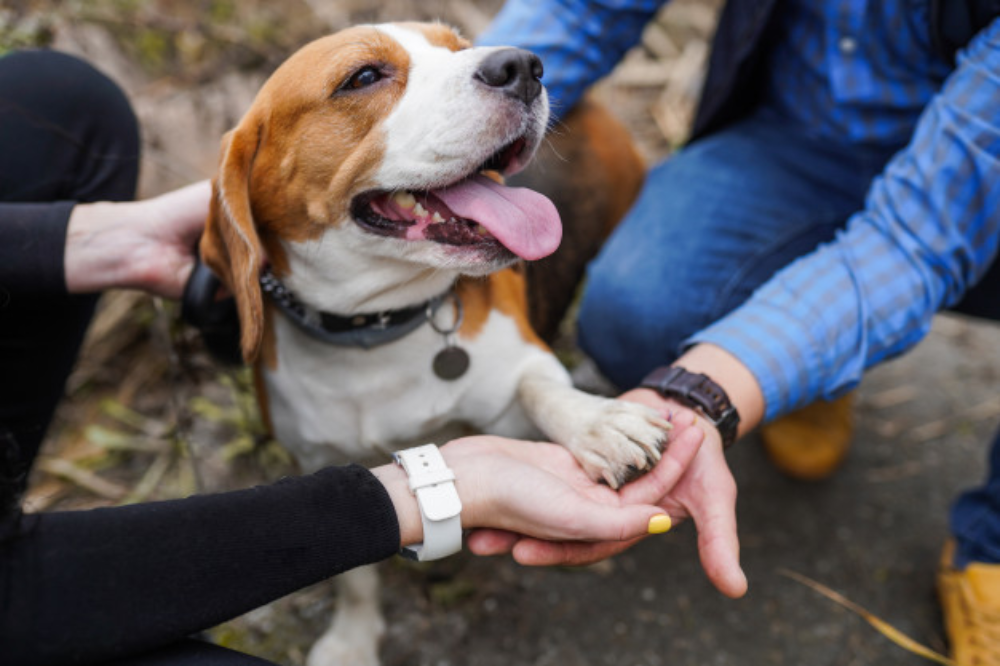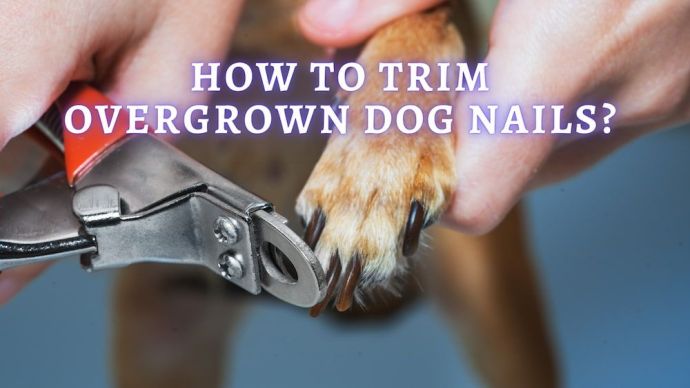Spaying a Dog: Should I Spay My Dog?
Written by:
Author: Alina Andreeva
Alina A. is a professional writer, editor, and pet-lover. She has published over 50 articles on how to care for pets properly. Alina has been writing articles for 3 years, so she has considerable experience in this niche. Her natural curiosity helps her to expand her knowledge and learn new pet care life hacks, which will make your life much easier.
View all 79 articlesLearn about our editorial process and veterinary review board.
Viewed: 159
Updated on: 03/13/2023
Reproductive instinct is natural, but sometimes dogs do not need to regularly breed. At the same time, the need for mating does not go anywhere and leads to a change in the behavior of the animal; at certain times, a dog becomes restless, aggressive, does not obey the owner, runs away, marks territory and spoils the owner’s belongings and property.
A female is ready to reproduce offspring 1-2 times a year. A male, to one degree or another, has an interest in mating always. A modern way to make the life of pets (and owners) more comfortable is neutering or spaying dogs. What do you need to know about this?
How Spaying helps?
- Terminates sexual function
- Relieves unwanted signs of sexual behavior
- Lowers the risks of inflammation and oncological diseases of the reproductive system
- Prevents breast tumors before the start of the reproductive cycle
- Increases the life expectancy of animals spayed at an early age
Keep in mind that spaying does not affect the character traits and qualities of dogs. After this procedure, the pet ceases to be aggressive and naughty or mark the territory. If the bad behavior was caused by other factors — e.g., gaps in training and diseases — then you should correct it by other methods.
How and when to Prepare a Pet for Operation?
Dog puberty occurs between the ages of 6 — 13 months, depending on size and breed. The spaying of females is recommended at the age of 6 months. This period after the change of teeth and before the first heat phase.
There is no need for special preparation before the procedure. You should keep the dog on a carnivorous diet for 12 hours (leaving it access to water) before the operation and take it for a walk.
Clinically healthy, vaccinated animals are allowed for surgery at least 3 weeks after the last vaccination. Before surgery, thoroughbreds should have the state of their cardiovascular system examined.
If the dog is more than 5 years old before spaying, it needs a preoperative examination to identify concomitant pathologies, determine contraindications, and the degree of anesthetic risk. It is necessary to pass general clinical and biochemical blood tests, do echocardiography, and an ECG.
What to do if I cannot afford to Spay?
You can contact your vet or local charity for pet protection if you don’t have enough money to spay your pet. Many of these centers offer different types of financing help. Visit the Humane Society website to find help in your state.
What to do if my Dog is Pregnant?
Sometimes it is tough to quickly identify the first signs of pregnancy in dogs.
If you suspect that your dog is pregnant, consult an experienced veterinarian to confirm or refute this assumption. In some cases, spaying the dog during the period of gestation is allowed. It will involve terminating the current pregnancy and preventing a recurrence of this situation in the future.
For more information on this topic, we recommend that you consult with an experienced and qualified veterinarian.
Remember that the final decision on how to spay your pet is always yours, and you must follow both your own interests and the needs of your four-legged friend. If you still have any doubts and questions regarding spaying dogs, contact your veterinarian for advice.
What happens if I don’t Spay my Female Dog?
If you decide not to spay your pet, then you may encounter several negative consequences. That is why you should carefully consider all the negative aspects associated with the refusal to spay a dog.
RELATED: Vet Advice On Spaying Your Female Dog
Negative consequences of Non-Spaying
About once every eight months, your pet comes into season, usually lasting up to three weeks. It is possible that at this time, love-starved male dogs from all around will visit your female dog.
When the dog comes into season, it will have discharge with a rather unpleasant odor.
Your non-spayed pet can quickly become pregnant. You will have to care for its puppies, which also entails additional costs. Even if you manage to subsequently sell your puppies, you are unlikely to be able to recoup all the costs incurred. Remember — it’s best to leave dog breeding to professional breeders.
Pros of Spaying
- Control of the stray dog population. There are too many strays in the world. Unprofessional breeding of dogs of any kind leads to an increase in the number of abandoned pets.
- Prevention of STDs. Sexually transmitted sarcoma, which has infected a considerable percentage of the stray dog population. Brucellosis is also transmitted sexually, which can cause infection in humans.
- Prevention of pregnancy complications. Some breeds — tiny dogs or brachycephalies — hardly give birth on their own as there is a high risk of complications, and a dog may need a cesarean section—possible complications: toxicosis, diabetes, inversion and rupture of the uterus, and others.
- Prevention of diseases in females. It is clinically proven that spaying females at an early age (before the first heat phase) prevent breast tumors and also eliminates pyometra, which often causes unexpected problems to owners of older dogs (the older the dog, the higher the risks of anesthesia).
- No false pregnancies. Some female dogs are prone to this phenomenon, so spaying is the most prudent option for the owner.
- Increased life expectancy. Researchers have found a “huge” difference in life expectancy between spayed and non-spayed animals. Spaying – especially in females – is associated with a significantly longer active life, and in the US, females are spayed much more often than males.
RELATED: Pros and Cons of Neutering a Male Dog (Vet Advice)
Risks of Neutering
- Neutering is a fairly common operation. There are certain risks, but the percentage is not significant. So, the mortality rate from such services is below 0.1%. Everything here depends on the age and state of the dog’s health.
- The results of numerous studies say that spayed animals have some oncological risks. There was an increased risk of developing osteosarcoma, hemangiosarcoma, lymphosarcoma, urinary tract cancer, and mast cell tumors. Each of these types of cancer has its own breed predispositions.
- According to some reports, spayed dogs have the risk of orthopedic diseases, such as rupture of the anterior cruciate ligament and hip dysplasia.
- One of the most common risks that owners consider when spaying females is the risk of incontinence. According to various sources, it affects 5-30%, but at the same time, symptoms can be controlled medically in more than half of the cases.
- There are breed-related risks for developing endocrine diseases, such as diabetes mellitus, hypothyroidism, and pancreatitis.
- Most often mentioned by owners as a risk factor for spaying is obesity. Breed predisposition and malnutrition of pets also play a role. When eating low-calorie food and performing moderate physical activity, the risks of obesity significantly decrease.
READ MORE: Best Orthopedic Dog Beds
The bottom line
You should remember that in the social aspect, the spaying of females at an early age is a humane attitude to animals and control the number of stray dogs and unwanted offspring.
Spaying is the ability to keep several pets in the house. Same-sex animals get along better with each other, and in the case of heterosexuals, the probability of an unplanned offspring disappears.
The operation allows you to make your life with your pet more comfortable, and the dog’s life becomes high quality and long. Do not forget that, despite its popularity, spaying is still a surgical intervention in the body. Trust only professionals, who perform surgery within the walls of a veterinary clinic, to minimize the risk of complications, and surround the pet with love and care.
 Dog Veterinary Tips Why is my Dog throwing up: Causes and Preventing (Veterinary Advice)
Dog Veterinary Tips Why is my Dog throwing up: Causes and Preventing (Veterinary Advice) - 23424
- 5
 Dog Care Why Is My Dog Bleeding From Its Butt? Causes and treatment of rectal bleeding in the dog
Dog Care Why Is My Dog Bleeding From Its Butt? Causes and treatment of rectal bleeding in the dog - 22076
- 0
 Dog Care My Dog Keeps Scratching His Mouth: Reasons Why Your Dog Scratching Face
Dog Care My Dog Keeps Scratching His Mouth: Reasons Why Your Dog Scratching Face - 17561
- 1



























